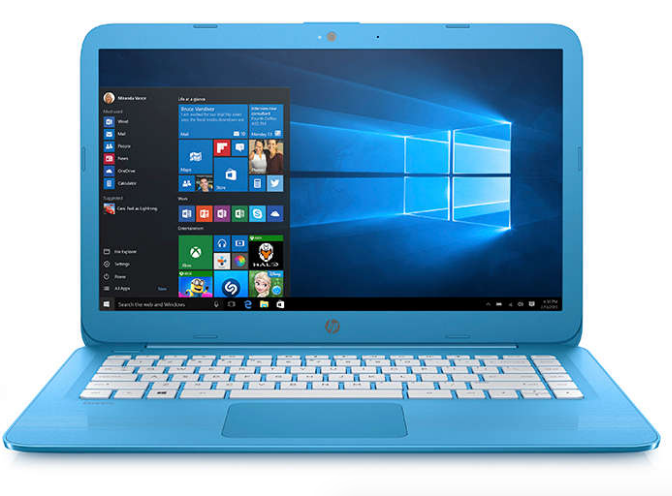by Larry Magid
With school already in session or about to start, lots of people are shopping for new technology. Whether it’s a young student looking for a phone or a tablet or an older one in need of a laptop, there are plenty of products to think about for the back-to-school crowd.
Tablets
Just about every student from upper elementary school grades through graduate school needs some type of computing device. For some, a tablet is sufficient, especially if you equip it with an external keyboard for writing papers. You could, of course, spend between $269 and $800 (plus the cost of a keyboard) for an Apple iPad but you could also opt for an Android or Amazon Fire tablet for as little as $49.
Even if the student in your life is an iPhone or Mac user, you should still consider a less expensive tablet. In my experience, Android and Amazon tablets can be just as reliable and pleasant to us as iPads and most (though admittedly not all) the iOS apps that work on iPads also have versions for Android.
While some students are perfectly comfortable typing on a tablet’s glass keyboard, I recommend that you consider an external Bluetooth keyboard for maximum efficiency for writing papers. They’re not expensive. Logitech, for example, makes a $30 keyboard that will work with computers, tablets and smartphones.
Chromebooks
Tablets have their place, but there is something to be said for the versatility of a laptop and its now possible to get a pretty good one at a budget price, especially if you consider a Chromebook that runs Google’s Chrome OS, instead of Windows or Macintosh OS X.
Acer, Asus and Hewlett-Packard, Dell, Lenovo, Toshiba and Samsung are among the companies that make Chromebooks for under $300 and in some cases under $200. The low-cost models aren’t the fastest devices in the world and they have very limited storage, but — since they’re powered by Google — you can bet they’ll be adequate for accessing web-based applications including Google’s own free word processing, spreadsheet and presentation apps.
And even though Chromebooks are designed primarily for use while connected to the internet, it is possible to use some of the apps, including Google docs and spreadsheets, while you’re not connected. A portion of this column was written on a Chromebook while not connected to the internet.
Inexpensive Windows laptop

Although there are plenty of Chrome apps, there are cases where a Mac or a Windows machine is either handy or necessary. I love the MacBook Air, but the least expensive new one costs $899, though you might consider a used or refurbished one.
There are plenty of inexpensive Windows laptops, starting at under $200. HP offers a 2.75 pound 11-inch Stream laptop starting at $179 that comes with high-speed Wi-Fi connectivity, a decent keyboard and screen, an HDMI port for an external monitor or TV set and two USB ports for optional external hard drives and other peripherals.
The least expensive model only comes with a paltry 32 gigabytes of storage but there will be a 64GB “Pro” version. Either way, that’s not a lot of storage but you get a free terabyte of online storage for a year. To sweeten the deal, they throw in a one- year subscription to Microsoft Office 365 personal edition, which is worth $70. The Stream comes in kid-friendly colors: Violet Purple, Aqua Blue and Snowy White.
I’m not sure I’d recommend this for a high schooler, but a very low cost laptop might be a good choice for a middle school aged student, especially if they have a tendency to lose or break things.
High school and college students may need a more powerful laptop with a sufficient amount of storage such as a MacBook Air or MacBook Pro or any good Windows 10 laptop like the Dell XPS 13, which starts at $799.
A lot of kids have smartphones these days and they’re using them for an incredible range of tasks, including homework. I know teachers who incorporate smartphones (or tablets for kids who don’t have one) in their assignments. Again, you have lots of choices ranging from low-cost Android phones to the latest high- end iPhone. If your kid really wants an iPhone and money matters, consider a reconditioned used one from places like Gazelle or look for a less expensive smaller or older model from your carrier or an Apple retailer, including places like Walmart and Costco.
Other useful back-to-school tech items include an external battery for phones and tablets like the $24 Anker PowerCore 1000, which lets you charge any USB phone or tablet, even if you’re away from an electrical outlet.
External USB hard drives are also quite useful to back up your device or provide additional storage and of course, your student will need a good backpack with plenty of padding and enough pockets for all their gadgets.
I don’t typically recommend extended warranties, but when it comes to tech that can be easily lost or broken, it may make sense to get some type of insurance.
Squaretrade is one of several companies that offer insurance programs that cover accidental damage. I signed up for a plan for my MacBook Air after Apple refused to cover my old one after I spilled coffee on the keyboard. And when buying tech products, try to use a credit card that offers an extended warranty and loss or damage protection. Not all do, but some will cover your products for up to 120 days.